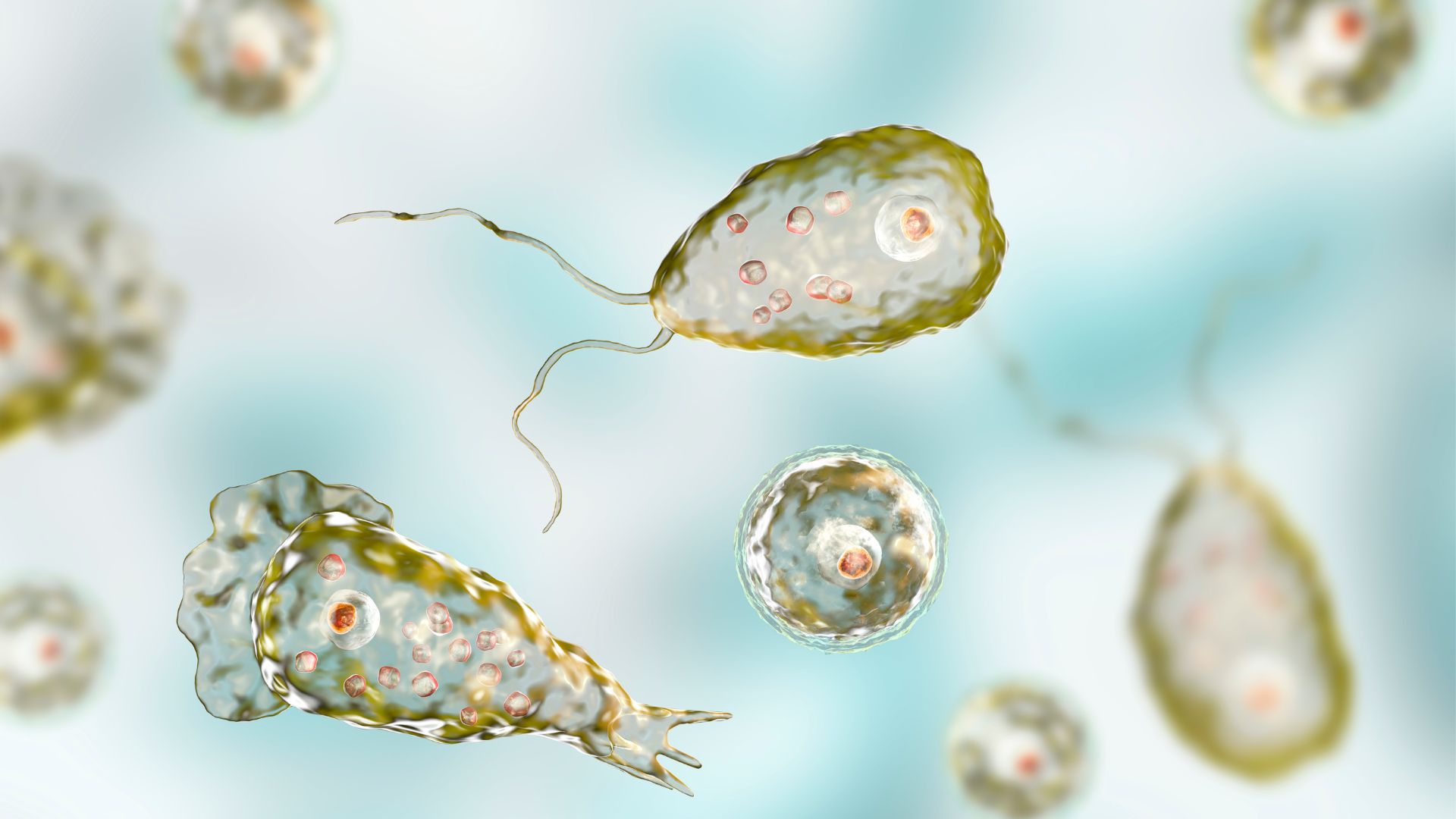
Deadly "brain-eating" amoeba infections usually strike people in southern U.S. states, but thanks to climate change, the brain-invading organism has expanded its range northward. In light of this trend, the Ohio Public Health Association recently published a case report to raise awareness of the disease among health care providers in the state.
"Increased incidence of N. fowleri [a species of brain-eating amoeba] in northern climates is but one of many ways climate change threatens human health and merits novel education of health care providers," the case report authors wrote in a paper published May 16 in the Ohio Journal of Public Health.
Naegleria fowleri is a single-cell organism that typically lives in soil and warm fresh water, as well as the occasional water tank, heater or pipe, according to the Centers for Disease Control and Prevention (CDC). In rare instances, the amoeba can infiltrate the human brain and spinal cord by first entering a person's nose — but it cannot reach the brain if swallowed in a gulp of water, for instance, and it doesn't spread between people. N. fowleri causes an infection called primary amebic meningoencephalitis (PAM), which is nearly always fatal.
PAM is rare — since 1962, about zero to eight cases have been reported nationwide each year, the case report noted. Most of these infections have been linked to swimming in the South, particularly in Florida and Texas, but since 2010, cases have started to occur in more northern states, including the Midwestern states Minnesota, Kansas and Indiana.
Related: Fatal 'brain-eating' amoeba successfully treated with repurposed UTI drug
"Ohio public health professionals should take note of the incidence of N fowleri infections in northern states including Indiana, Iowa, and Minnesota, as well as common vacation destinations for Ohioans where N fowleri infection has been reported, such as Virginia, North Carolina, South Carolina, Georgia, and Florida," the new case report noted.
The report describes a case in which a woman in her mid-30s was brought, unconscious, to a hospital in an unspecified Midwestern state after experiencing severe headache, light sensitivity, nausea and confusion. She was initially flagged as having a suspected case of bacterial meningitis, or brain inflammation caused by bacteria.
During an interview with the woman's spouse, however, a public health nurse learned that the patient and her family had gone to a freshwater lake beach four days prior and she'd submerged her head beneath the water. (PAM symptoms typically arise one to 12 days after N. fowleri enters the nose.)
Samples of the patient's cerebrospinal fluid — the fluid that surrounds the brain and spinal cord — came back negative for bacteria, so the team suspected a virus might be behind the infection. But as the patient continued to rapidly worsen, her nurse contacted the Bureau of Infectious Diseases at the state department of health about other potential causes; the state department then contacted the CDC. Given the patient's recent lake outing, the CDC suggested the culprit might be N. fowleri.
After relaying this to the patient's medical team, the CDC provided information about miltefosine, a drug that has killed N. fowleri in the lab and slain other species of brain-eating amoeba in people.
"The patient responded favorably to the medication. Two weeks after symptom onset, she recovered with minimal neurological damage and was able to resume a high quality of life with her family," the report says.
PAM is treated with a handful of drugs in addition to miltefosine, which are all thought to kill N. fowleri and were previously used in survivors of the infection, according to the CDC. Speedy diagnosis is key to getting patients started on these treatments in time to potentially make a difference.
Health providers in northern states should probe whether patients with meningitis symptoms have recently swum in warm fresh water, and they should contact the CDC at (800) 232-4636 if PAM is suspected, the report noted.
"Combined with increased incidence in northern climates, untrained and unaware public health professionals and health care providers may exacerbate prolonged diagnostic periods and delay time-sensitive treatment in what is ultimately a quick decline for PAM patients," the report states.







